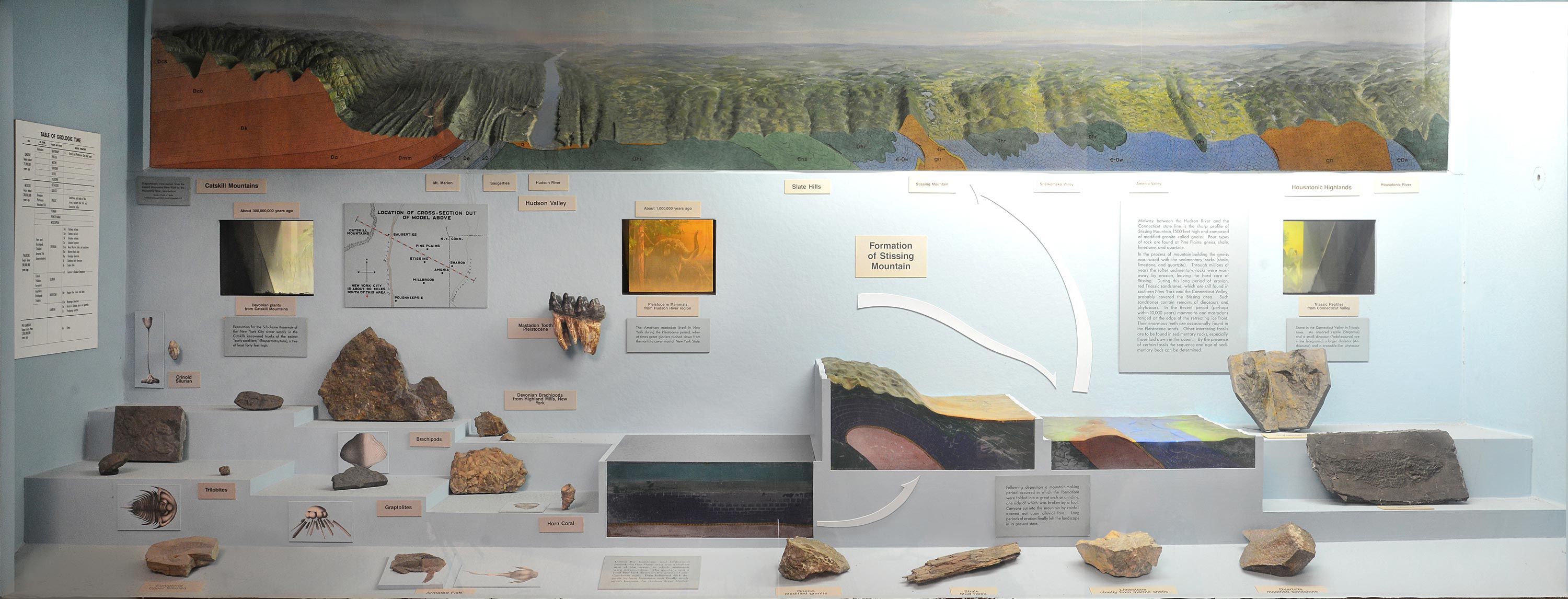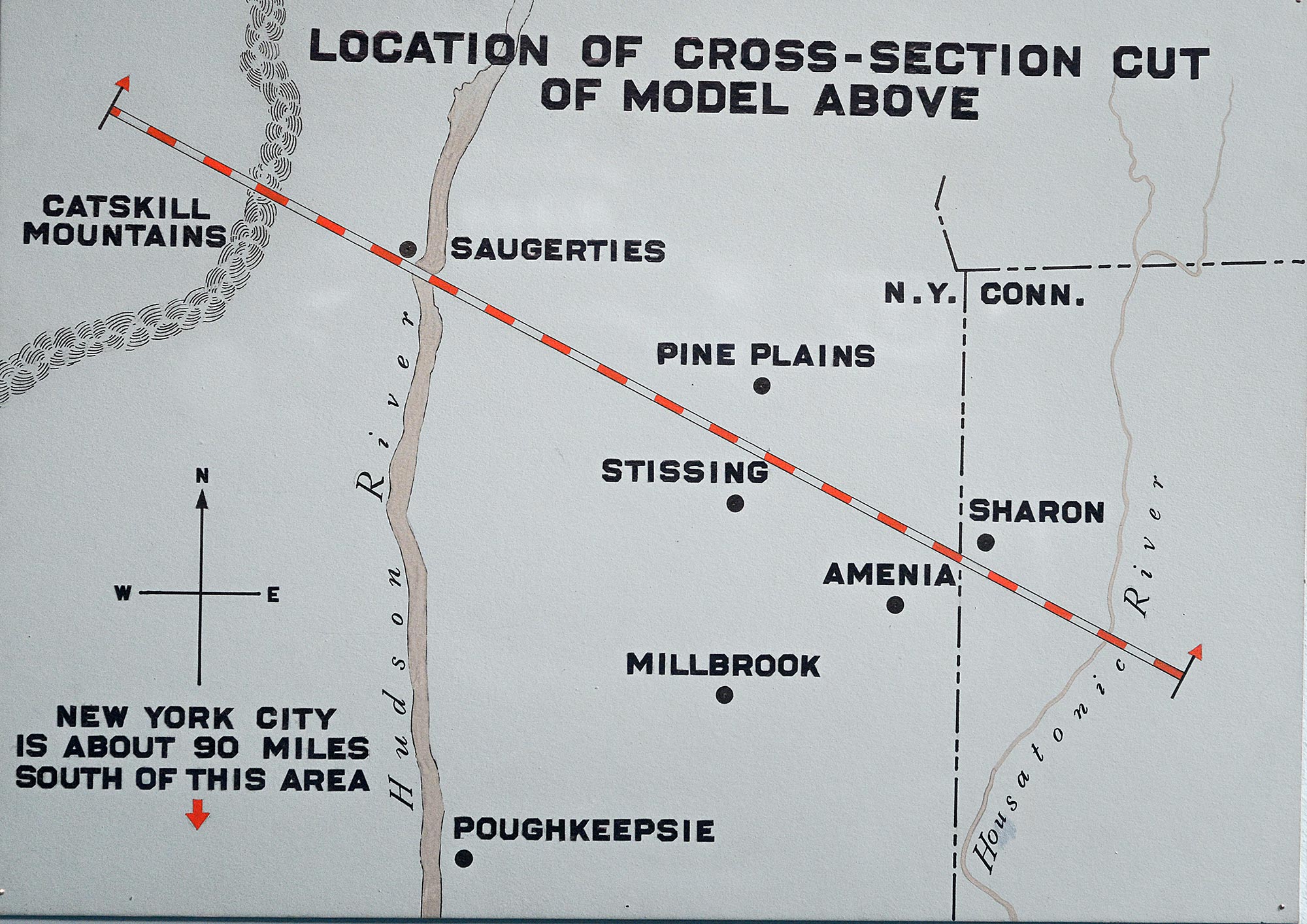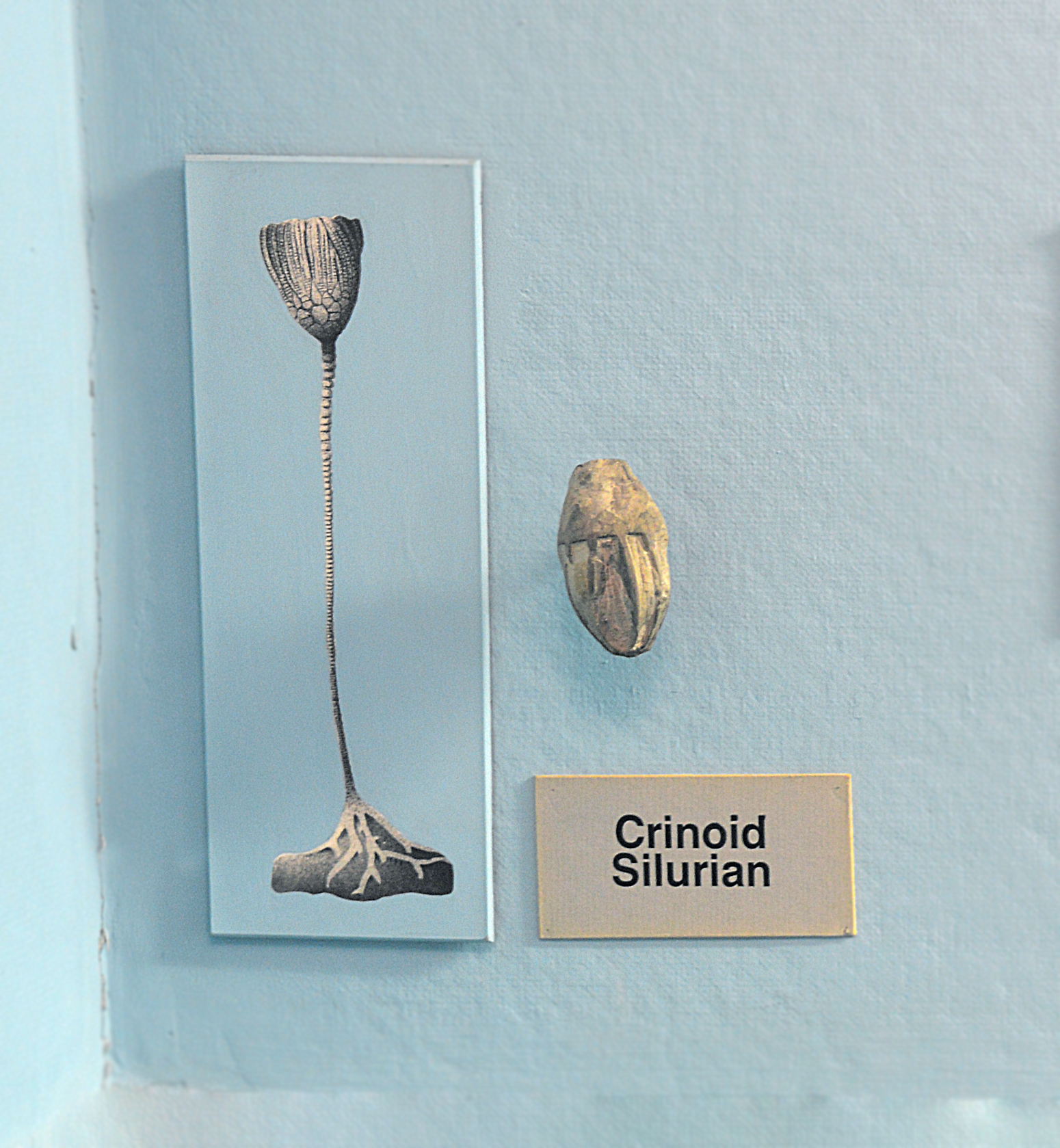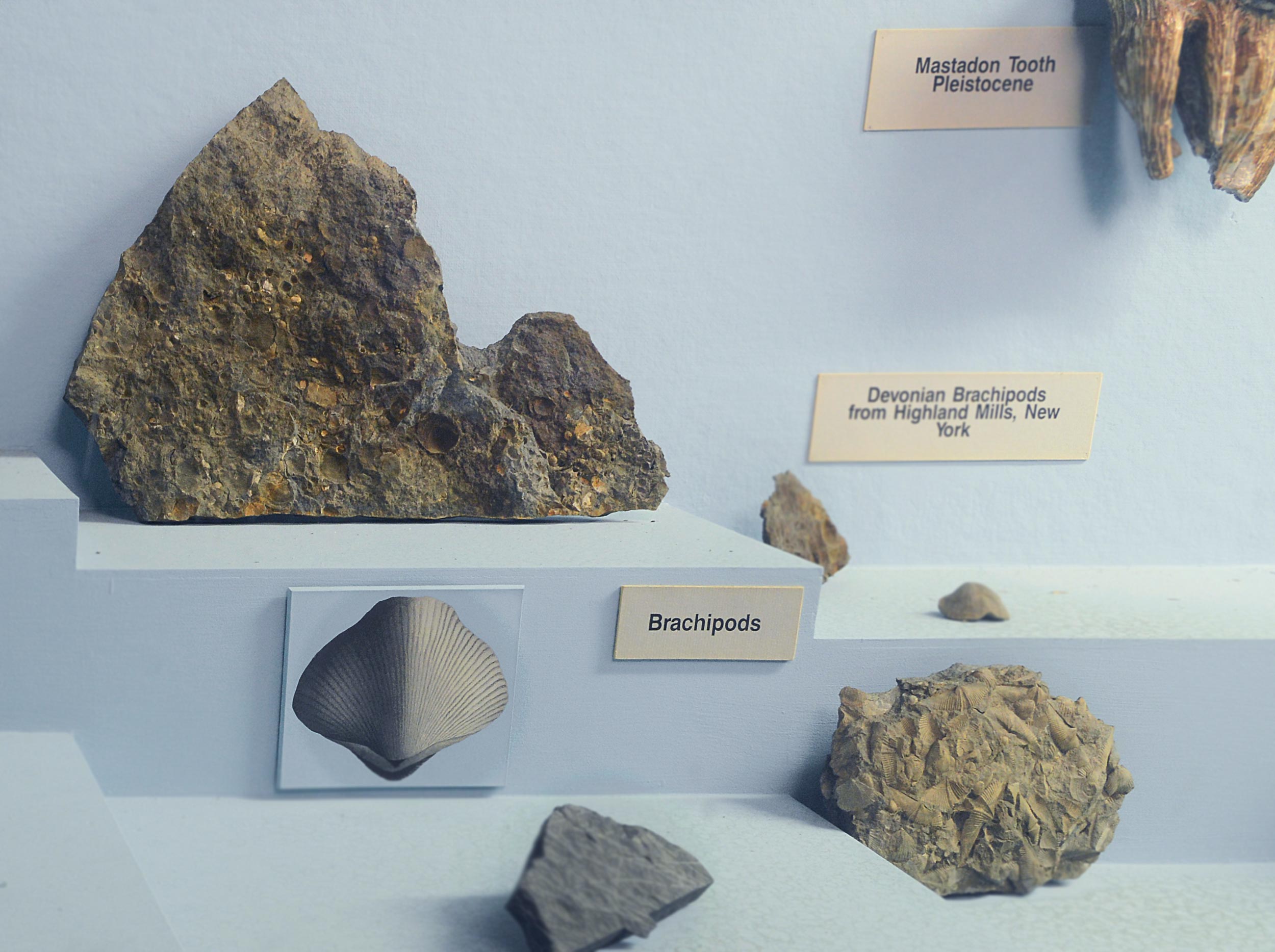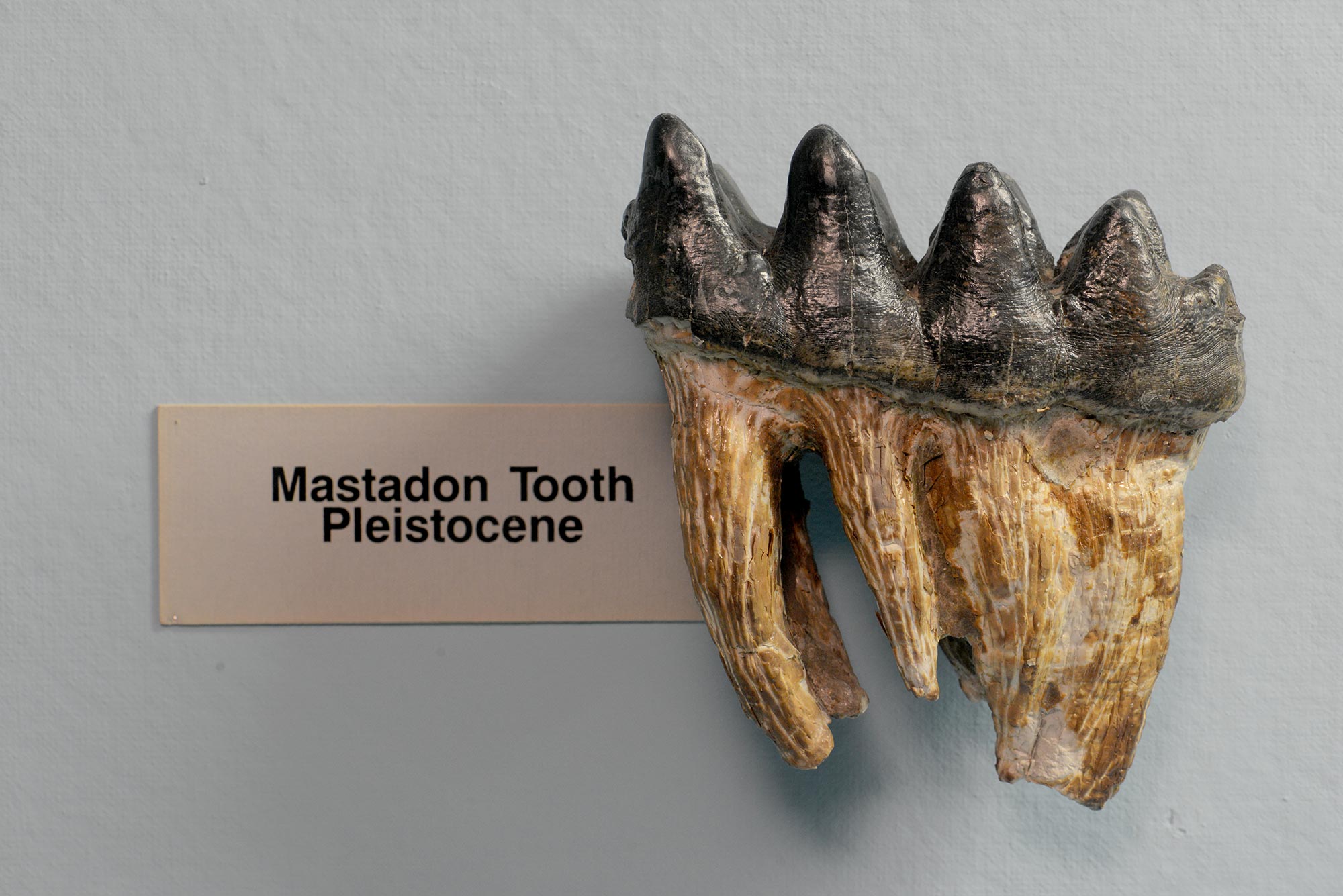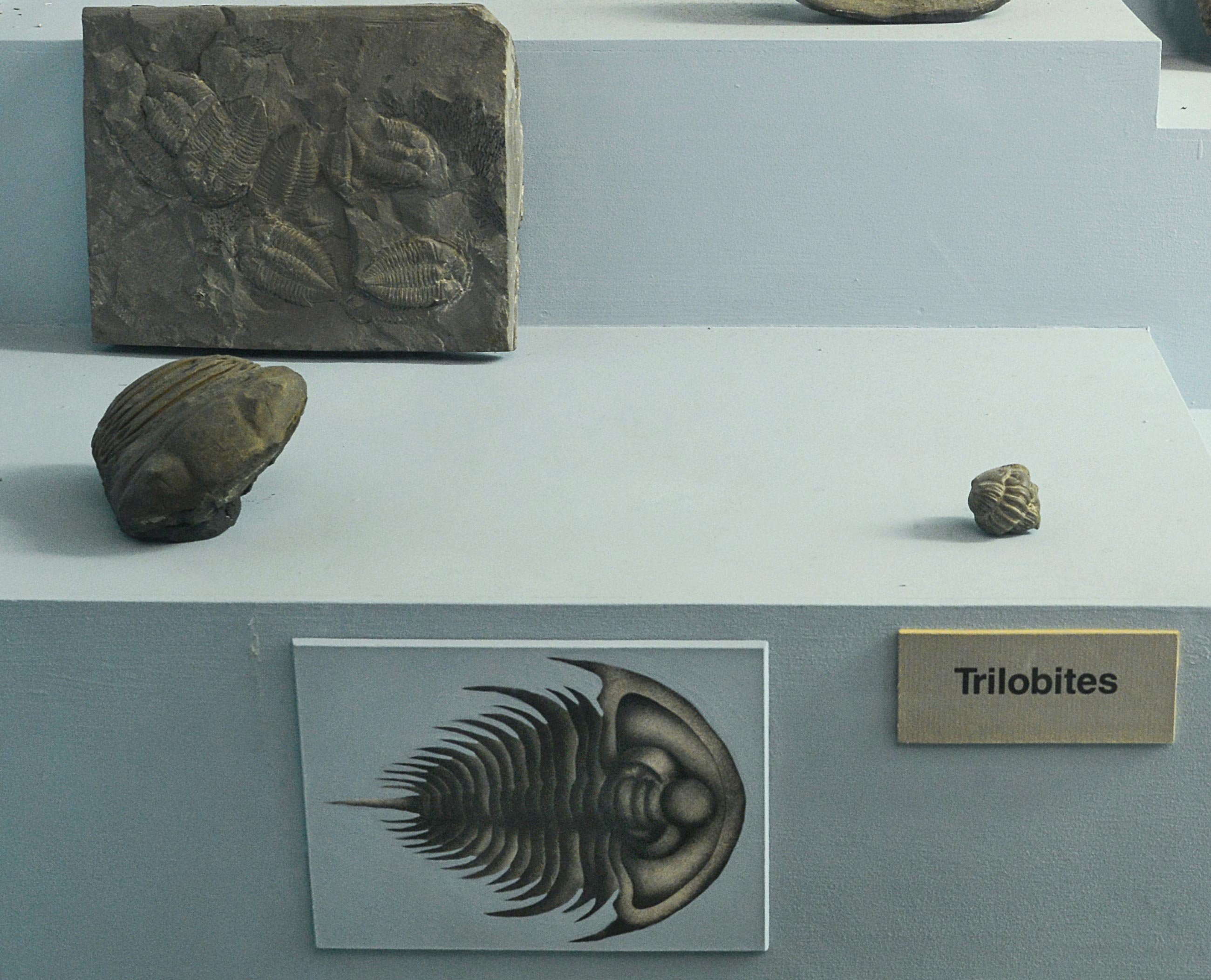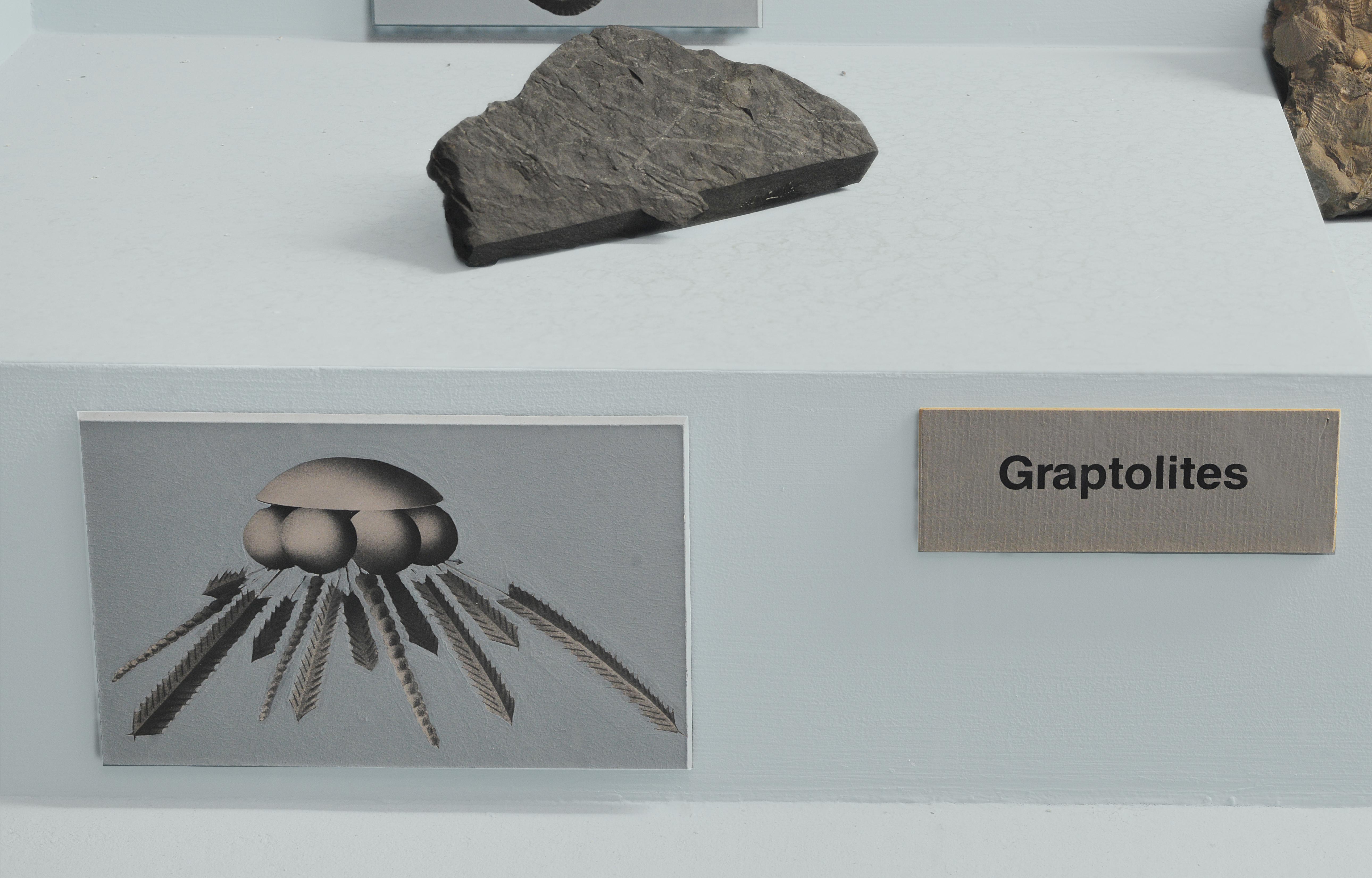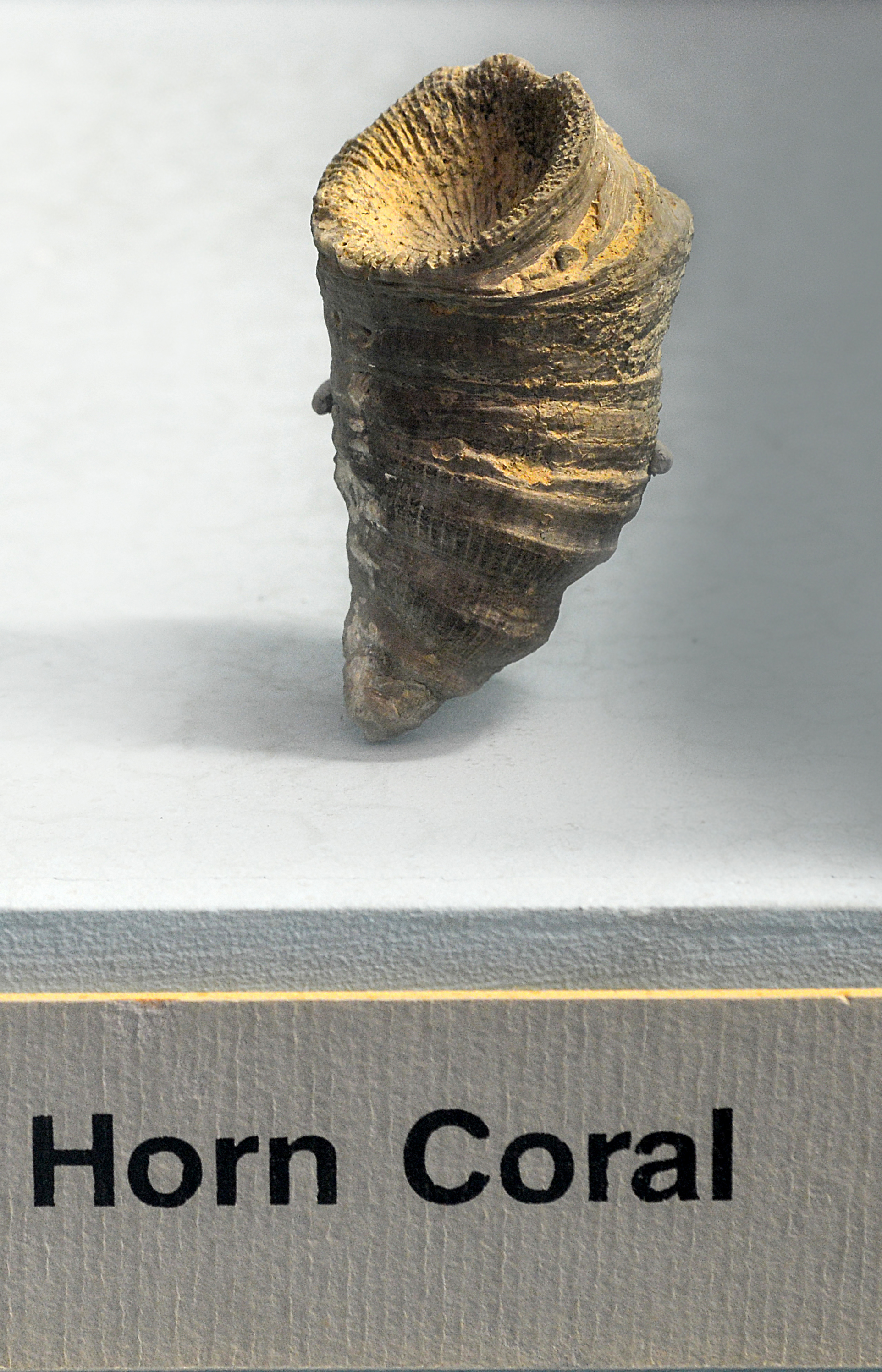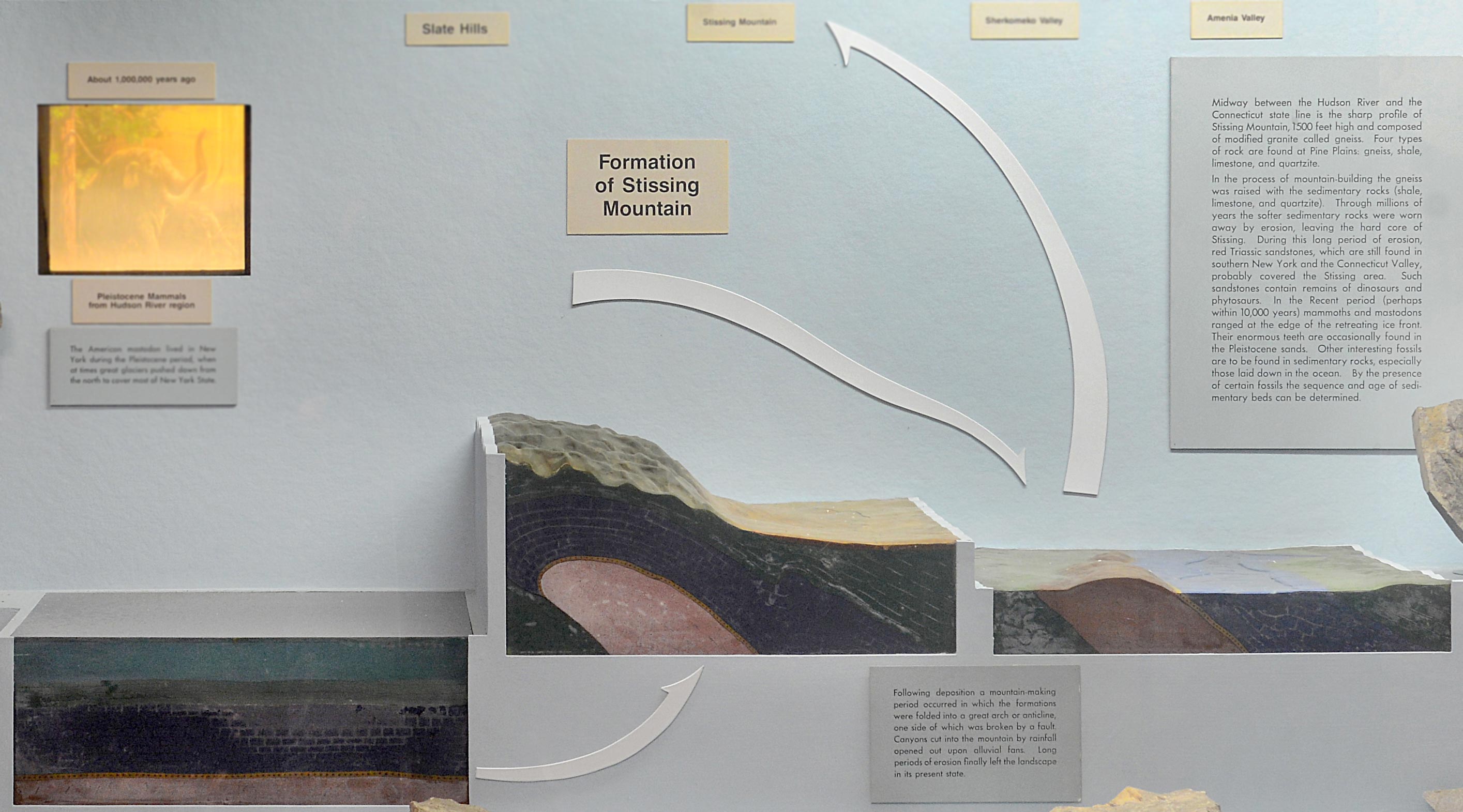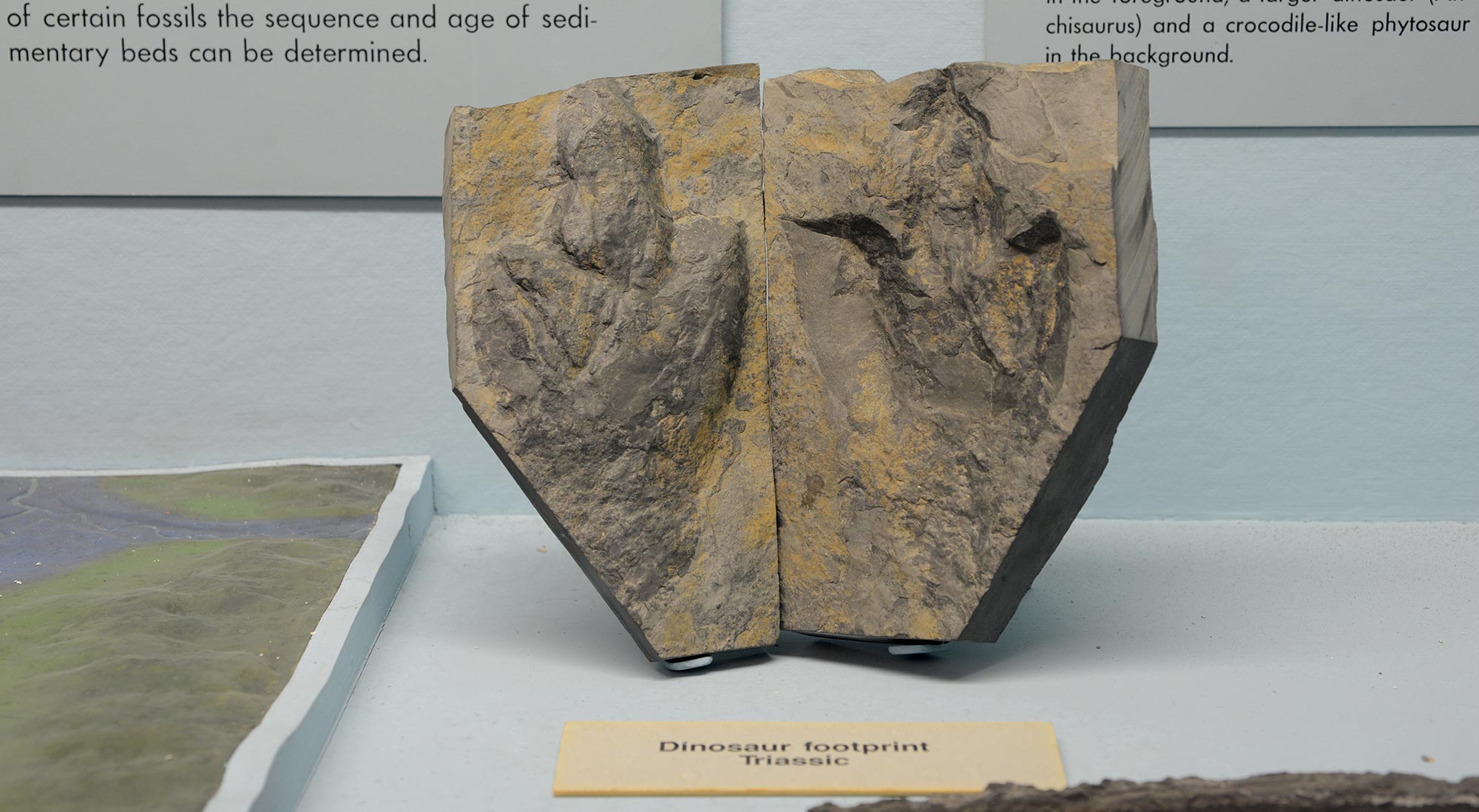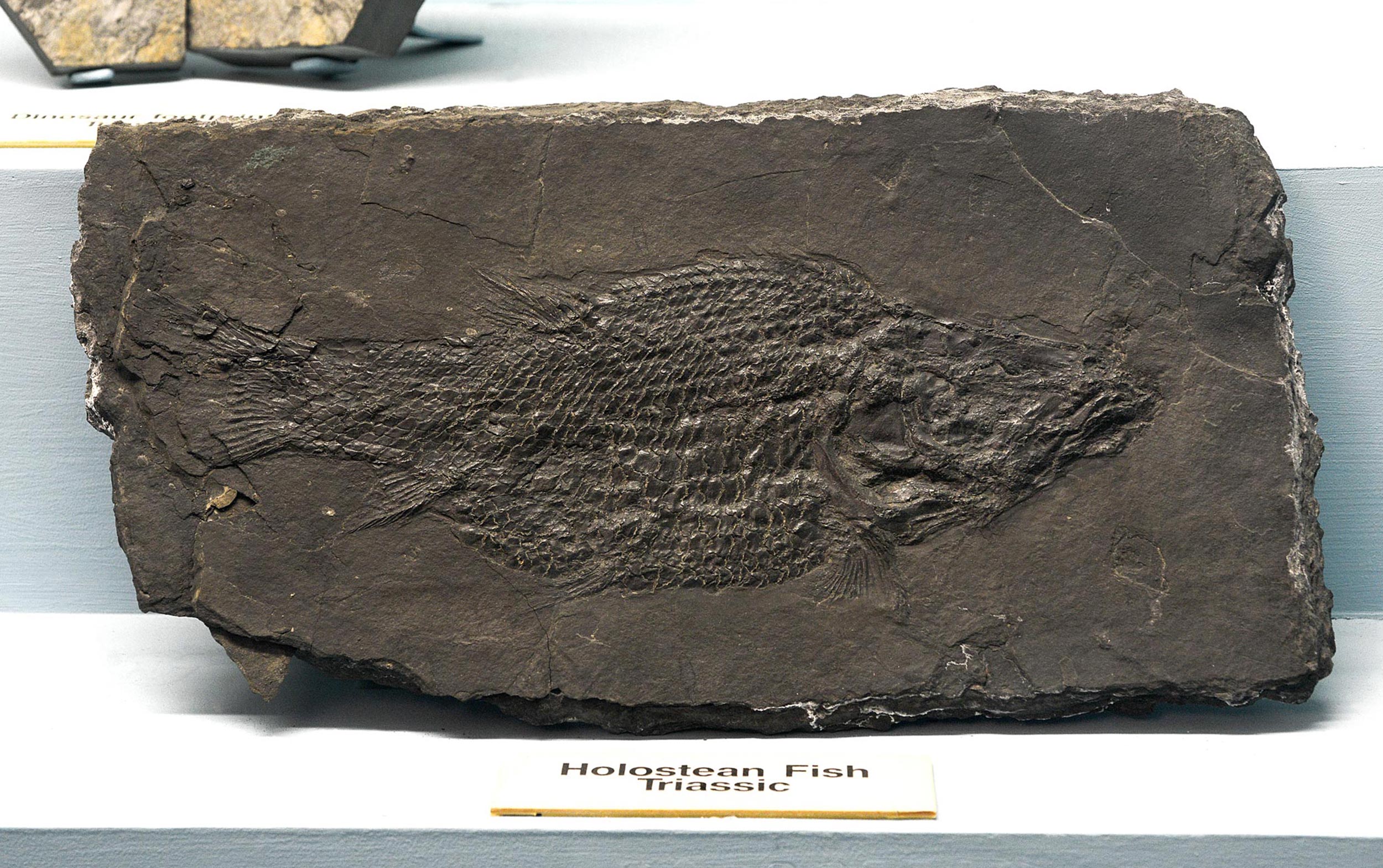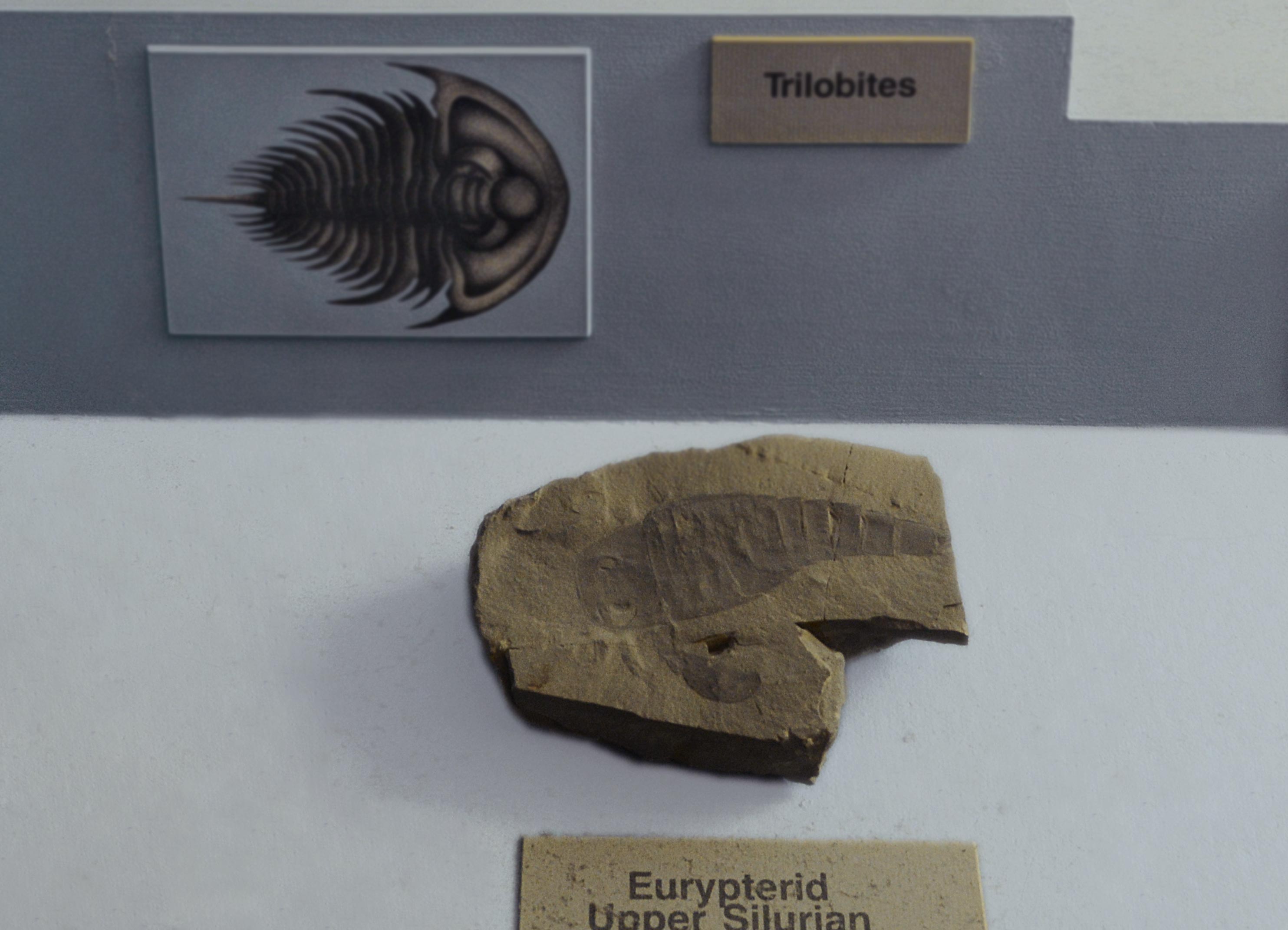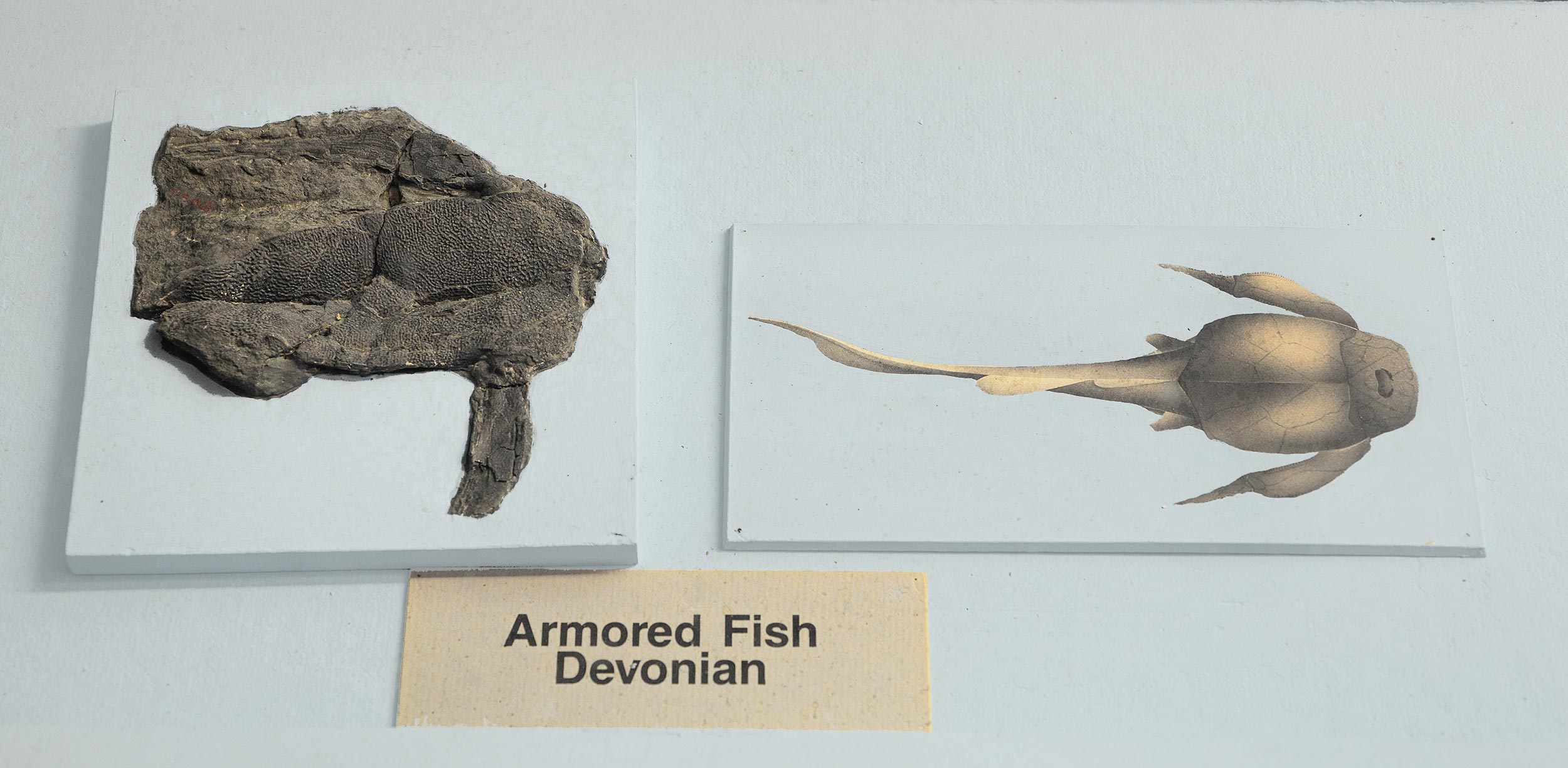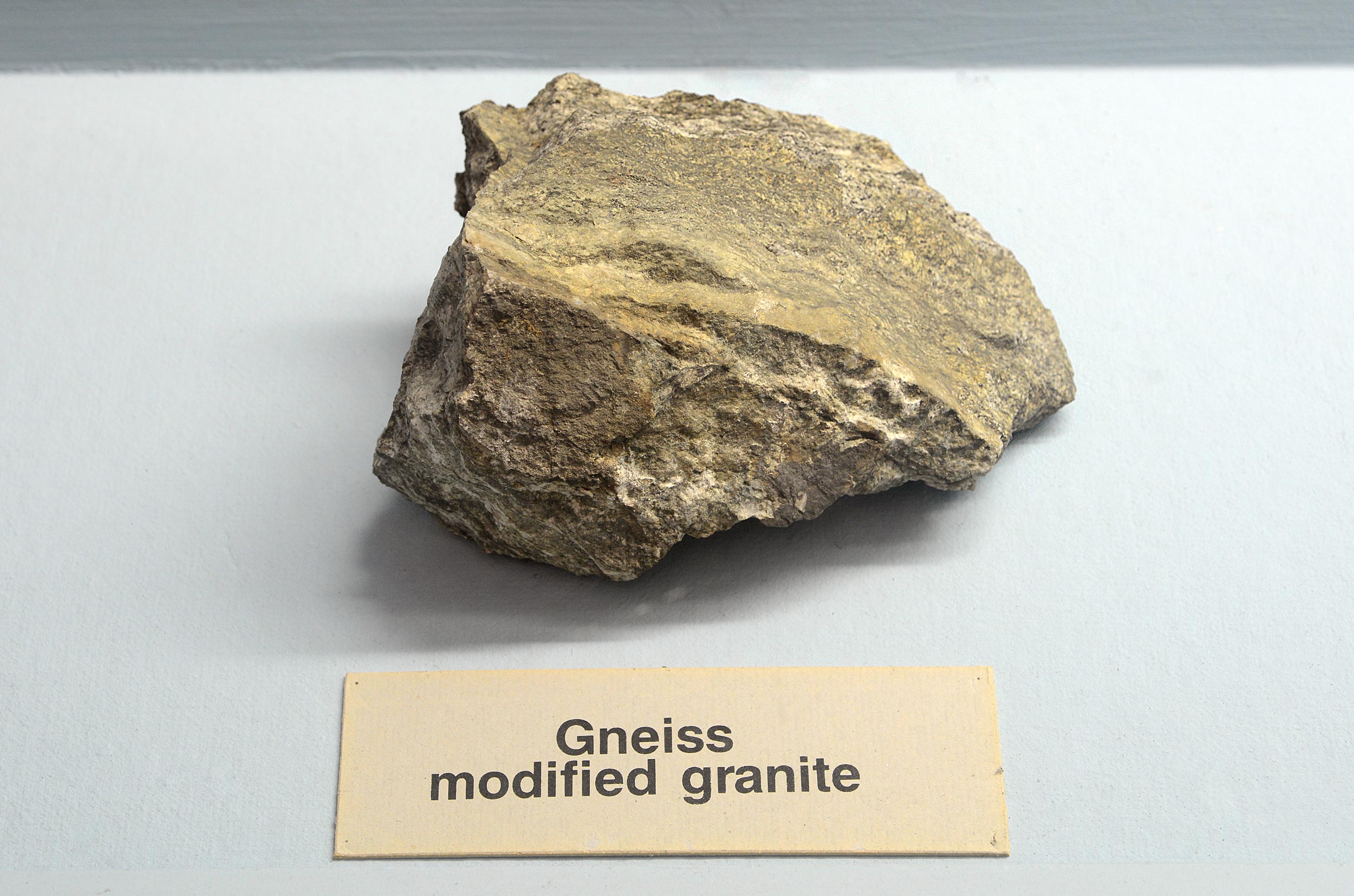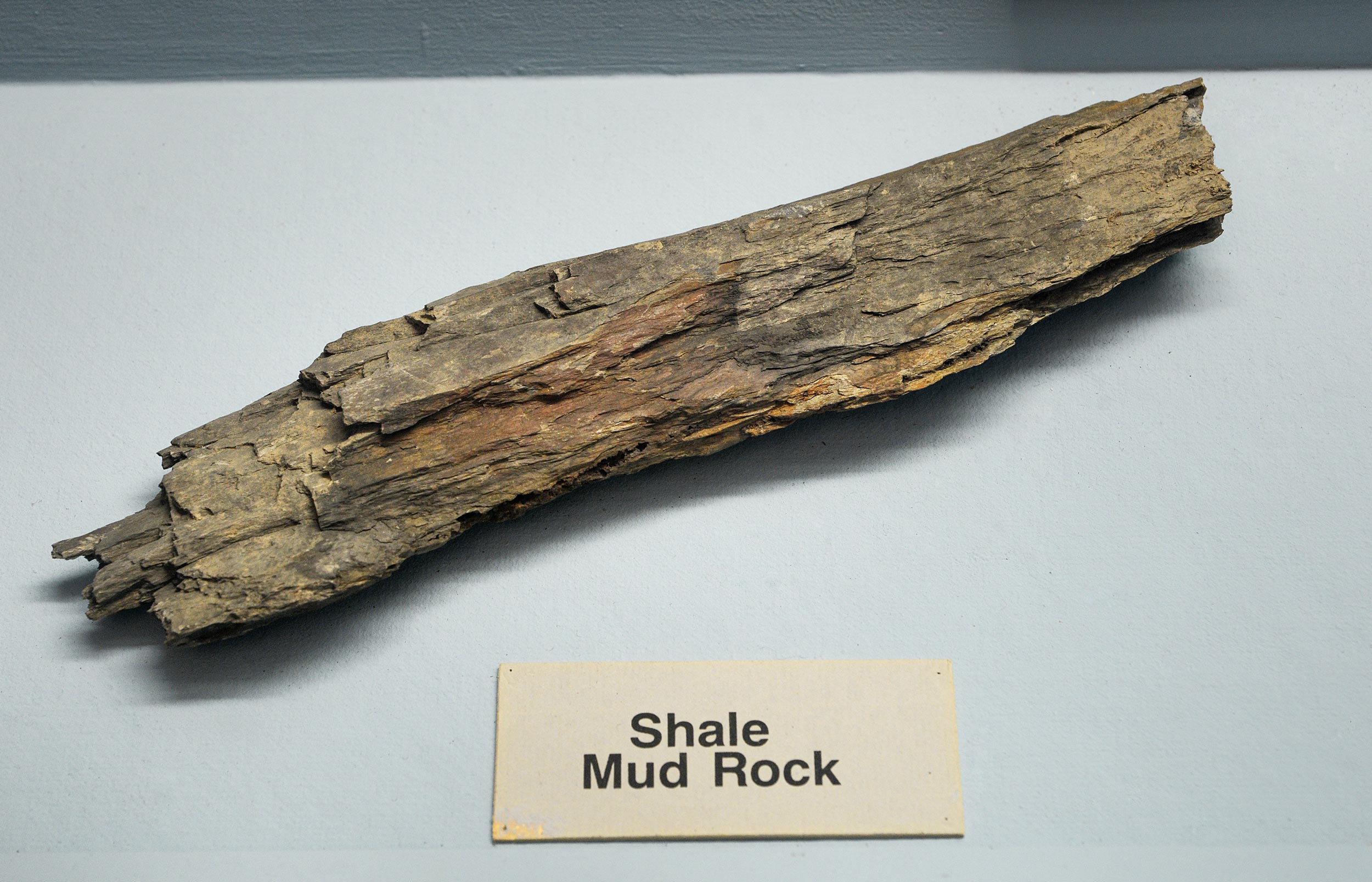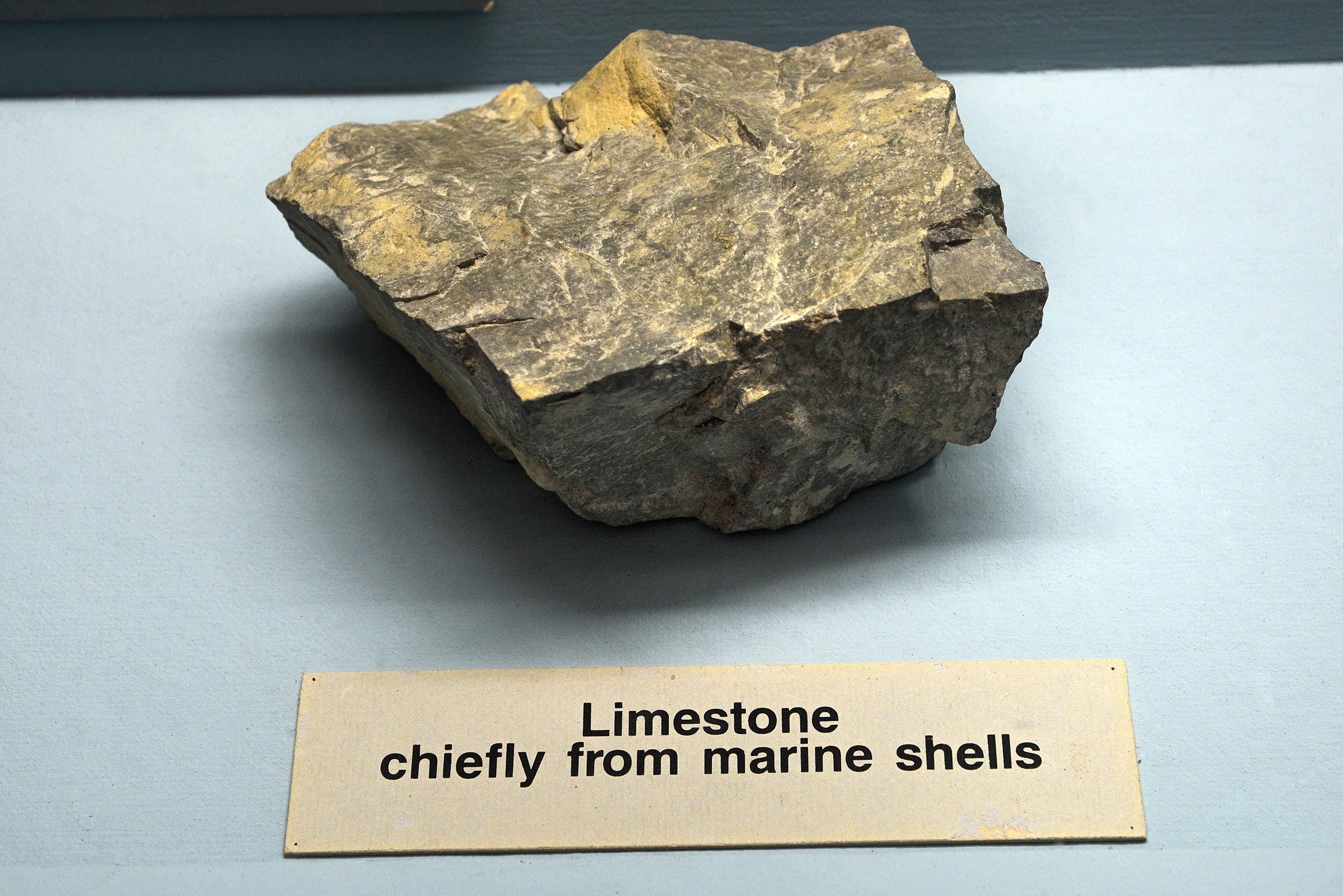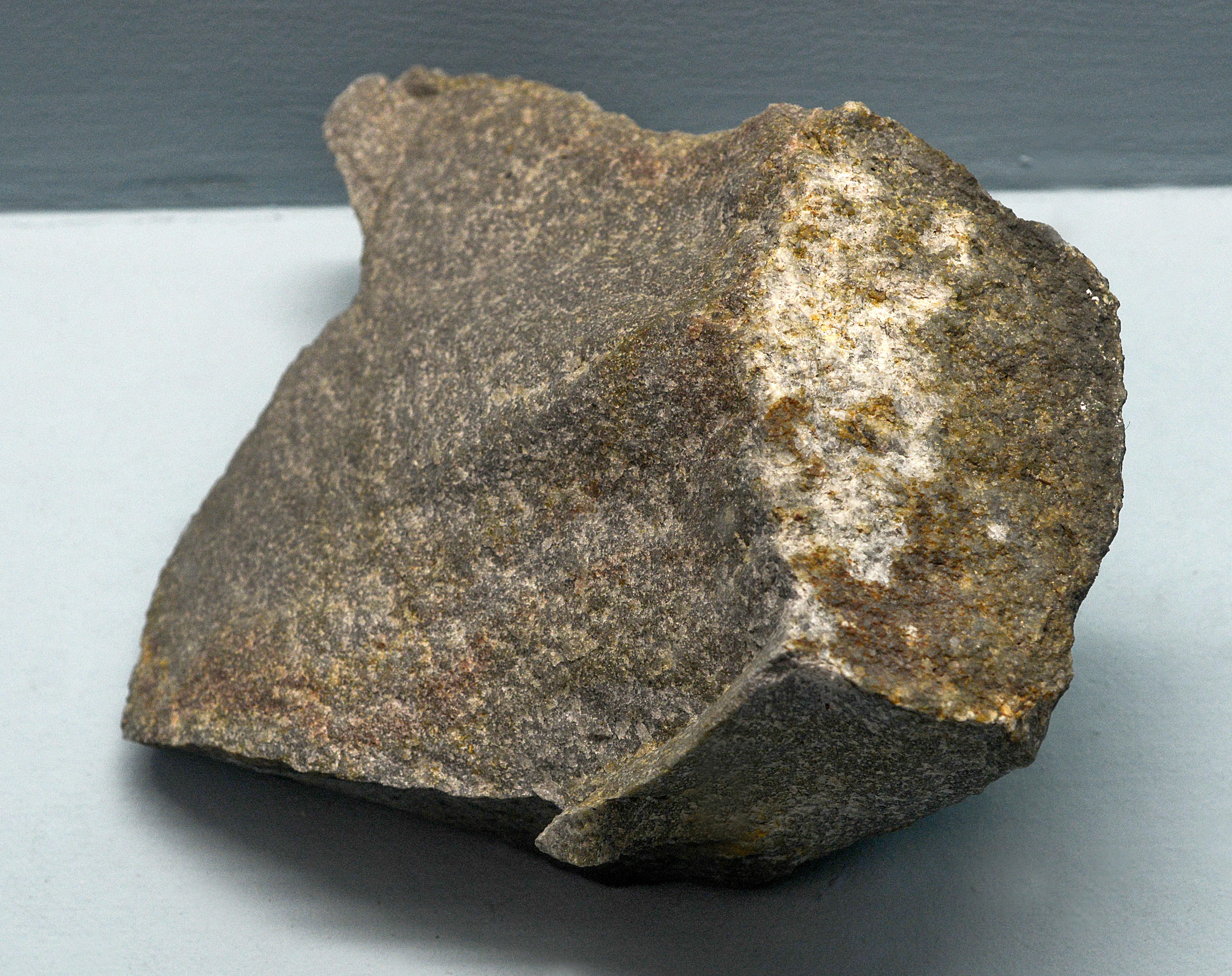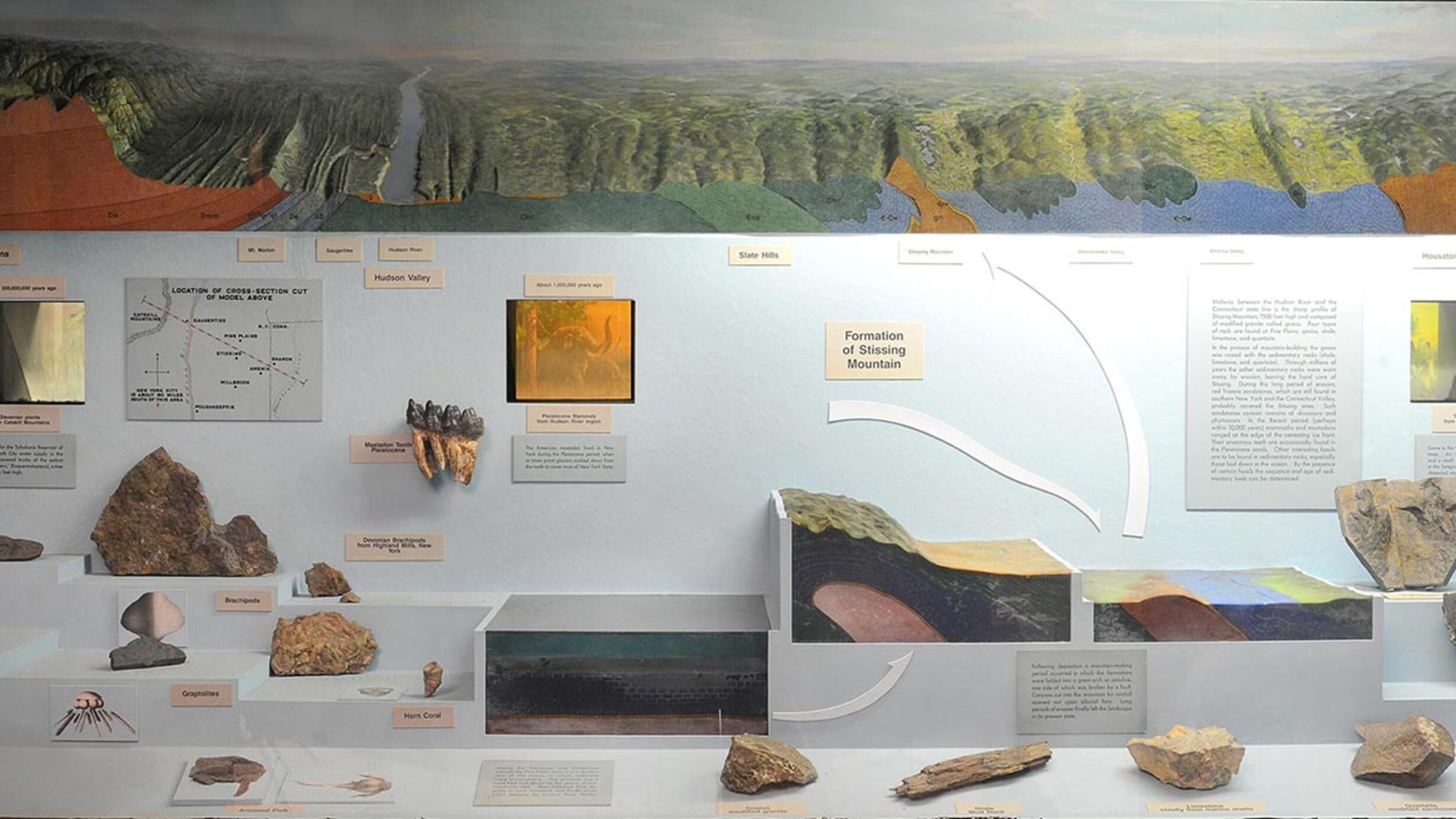Devonian Plants
Excavation for the Schoharie Reservoir of the New York City water supply in the Catskills uncovered trunks of the extinct "early seed fern” (Eospermatopteris), a tree at least forty feet high.

Pleistocene Mammals from the Hudson River Region
The American mastodon lived in New York during the Pleistocene period, when at times great glaciers pushed down from the north to cover most of New York State.
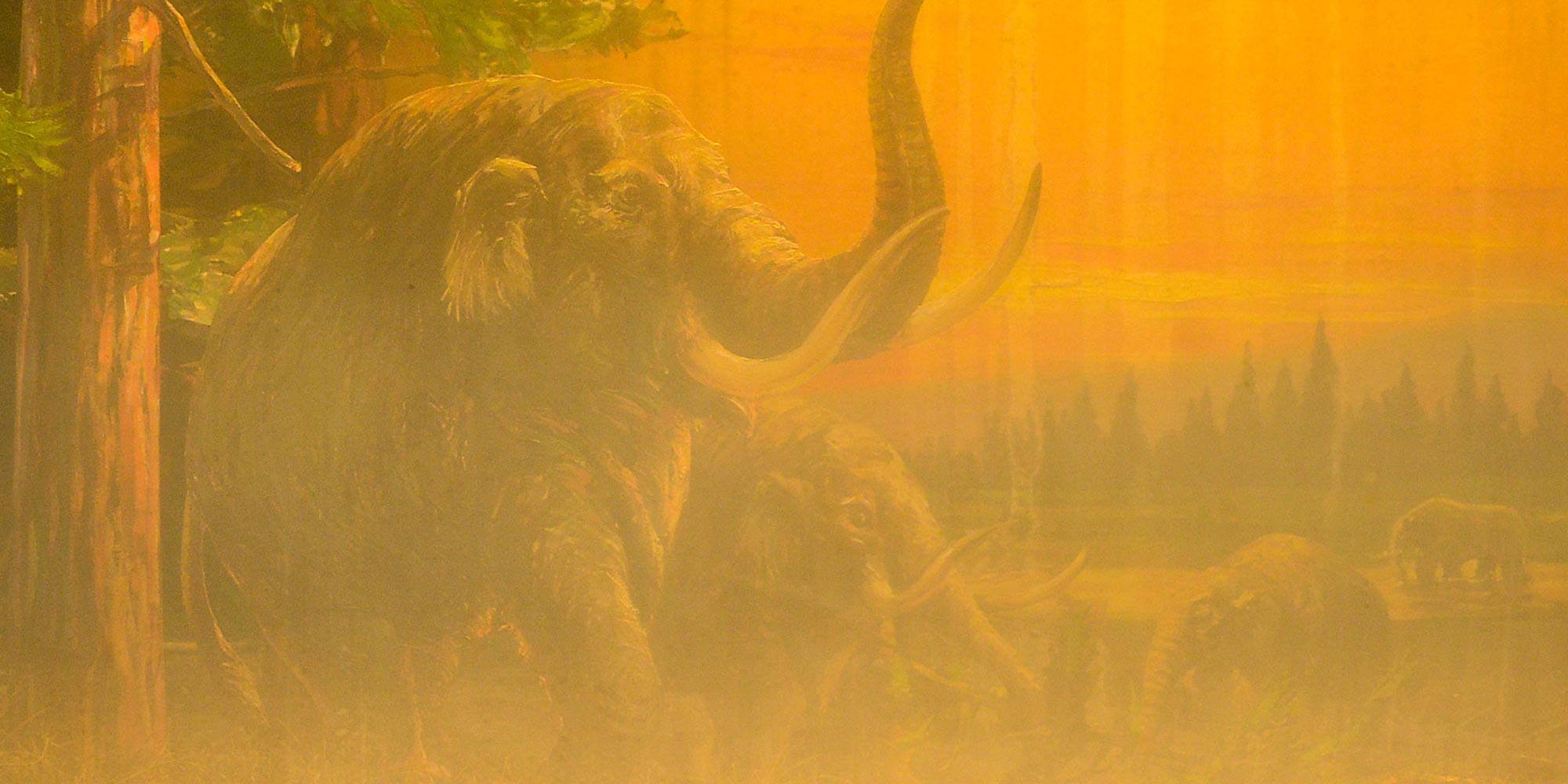
Main text
Midway between the Hudson River and the Connecticut state line is the sharp profile of Stissing Mountain, 1500 feet high and composed of modified granite called gneiss. Four types of rock are found at Pine Plains: gneiss, shale, limestone, and quartzite.
In the process of mountain-building the gneiss was raised with the sedimentary rocks (shale, limestone and quartzite). Through millions of years the softer sedimentary rocks were worn away by erosion, leaving the hard core of Stissing. During this long period of erosion, red Triassic sandstones, which are still found in southern New York and the Connecticut Valley, probably covered the Stissing area. Such sandstones contain remains of dinosaurs and phytosaurs. In the recent period (perhaps within 10,000 years) mammoths and mastodons ranged at the edge of the retreating ice front. Their enormous teeth are occasionally found in the Pleistocene sands. Other interesting fossils are to be found in sedimentary rocks, especially those laid down in the ocean. By the presence of certain fossils the sequence and age of sedimentary beds can be determined.
Triassic Reptiles Connecticut Valley
Scene in the Connecticut Valley in Triassic times. An armored reptile (Stegomus) and a small dinosaur (Podokesaurus) are in the foreground; a larger dinosaur (Anchisaurus) and a crocodile-like phytosaur in the background.
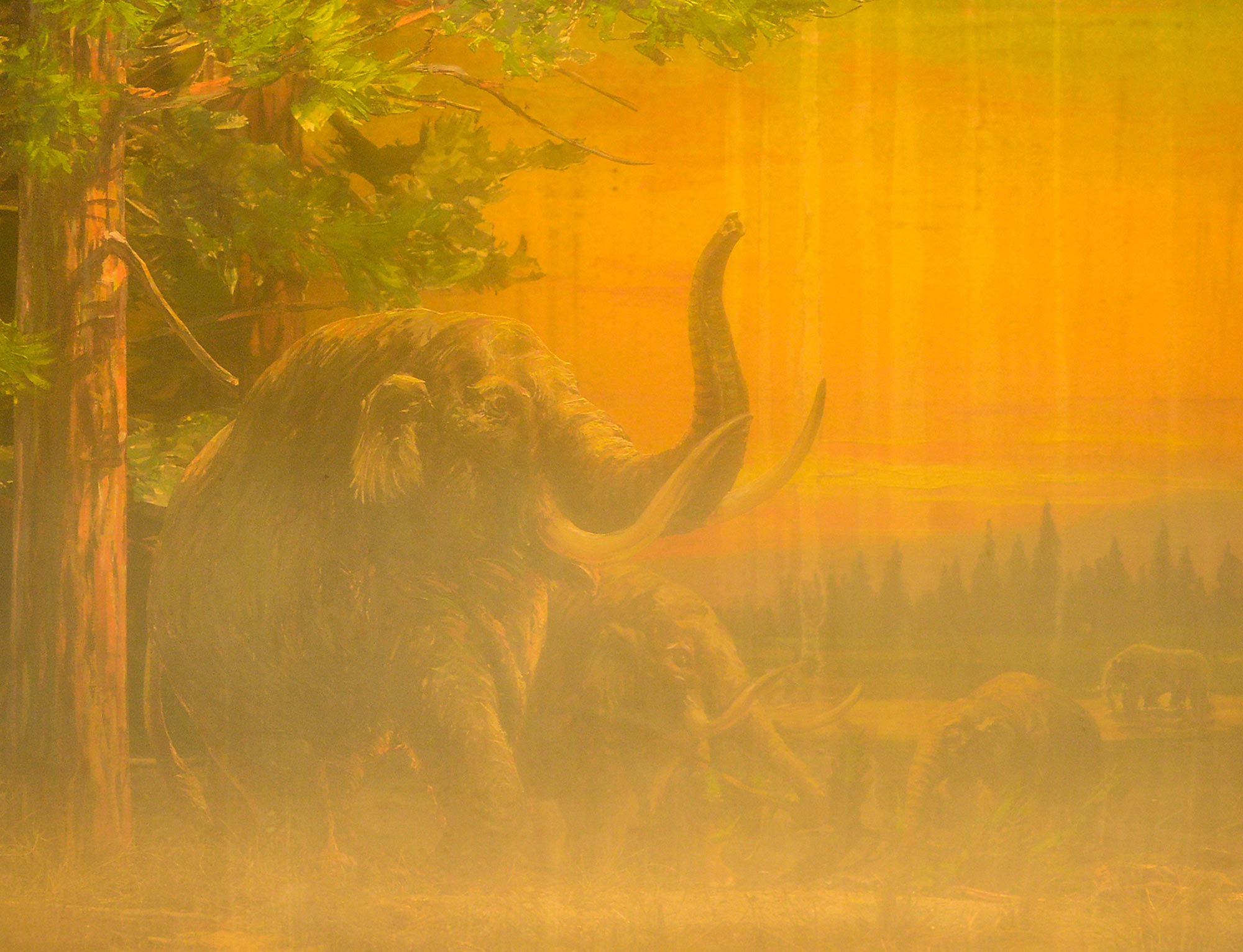
model bottom right
Following deposition a mountain-making period occurred in which the formations were folded into a great arch or anticline, one aide of which was broken by a fault. Canyons cut into the mountain by rainfall opened out upon alluvial fans. Long periods of erosion finally left the landscape in its present state.
model bottom left
During the Cambrian and Ordovician periods the Pine Plains area was a shallow arm of the ocean, in which sediments were accumulating. The quartzite was a sand bed laid down on the gneiss of pre-Cambrian age. Then followed thick deposits to form limestone and finally muds which became the Hudson River Shales.
Geological History and Structure
Part of Hall of New York State Environment.
